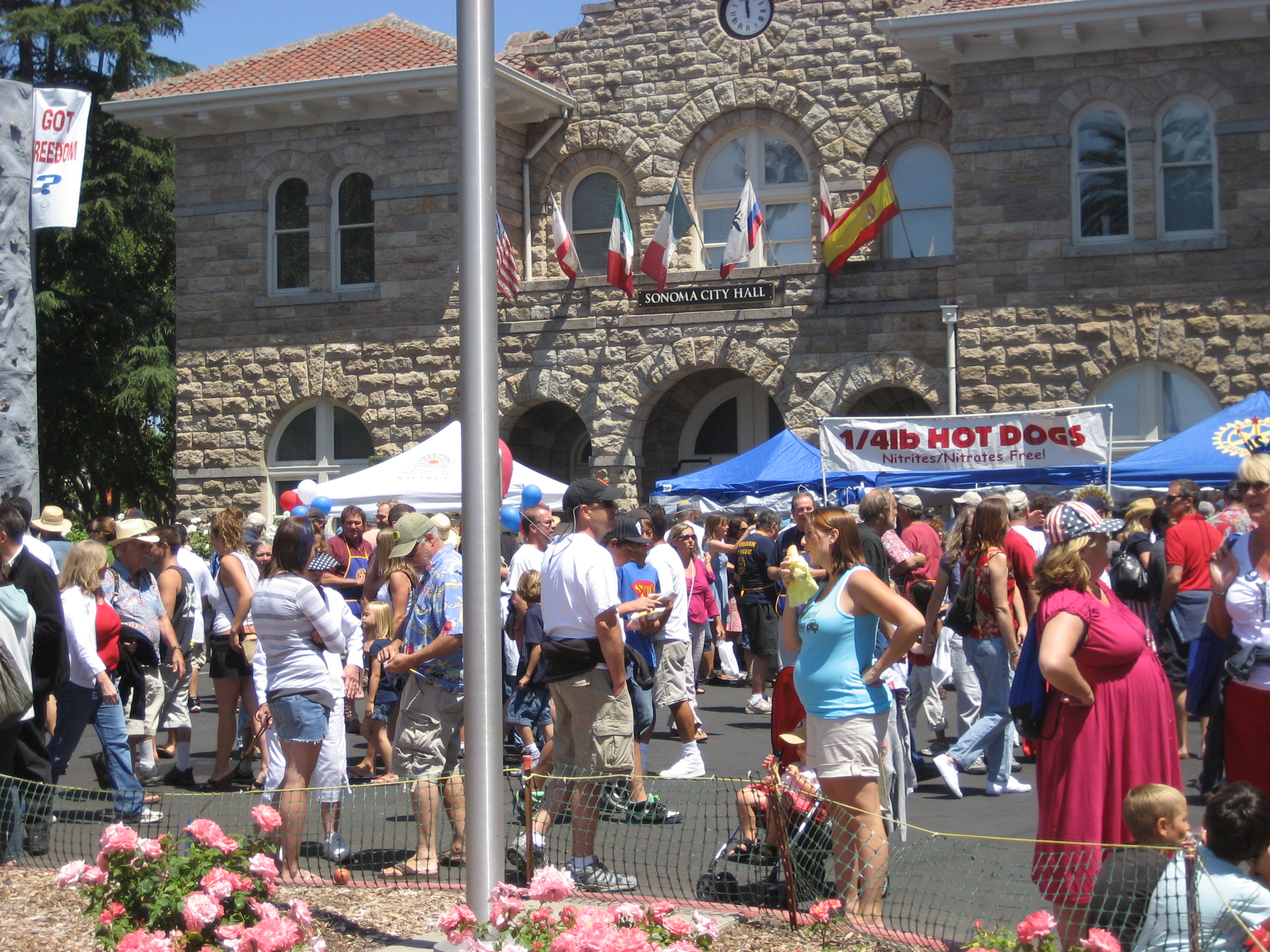Events are a manifestation of civic life, and since Sonoma has a nice Plaza with lots of atmosphere and history, the public gravitates to this open space as a meaningful, central location. The Plaza is the ultimate desired event location, both for residents and tourists.
Special events include three different sets of actors: the city, the event purveyors, and the public, each with different goals and priorities. These different motivations and outcomes call for a nexus, and balance from the community in general, to weigh overall event costs and benefits.
Events as a whole represent a cross-section of community stakeholder values and interests, from small, free, family-oriented, cultural celebrations and exhibitions, to big alcohol-infused parties, luxury charity fundraisers, pure tourism promotion, and resident-centered festivity.
There are approximately 28 annual events on city-owned properties. Additionally there are 26 weeks of farmer’s markets, and four Jazz Society events. A majority of events are on weekends, by local non-profits, in the summer and fall.
The city’s role is to provide the desired public space (Plaza) for events, and to ensure they meet special events policy. In this regard the city has a number of administrative layers to approve and event, starting with the staff-based Special Events Committee (SEC). The SEC is made up of Special Events coordinator Lisa Jansen, Public Works staff, police, fire, and others. The SEC reviews, among other things, event location, size and scope, waste management plans, security, alcohol and parking permits, and impacts on the grounds and city streets.
Within the last year, the city hired a special events coordinator, Lisa Jansen. Her job is to manage all event processes, including bookings, collection of fees, acting as the event liaison with City staff and City committees, making presentations to City boards and committees, providing on-site event monitoring and post-event reviews, and ensure that events conform to city special events policy. (Lisa was consulted for this article.)
If an event is “small,” eight hours or less, it will be reviewed by SEC staff only. If an event is large, it will also be reviewed by the Community Services and Environmental Commission, (CSEC).
The CSEC’s job is to assess overall costs and benefits, and suggest to event purveyors and city staff how to proceed accordingly. This takes place in publicly noticed meetings with pre- and post-event reviews. Event budgets are reviewed and an effort has been made by the CSEC to standardize financial information so as to meaningfully be able to compare events at this level. Overall, lack of financial quantification makes it difficult to use budgets alone to reckon event costs and benefits.
Mostly the CSEC does not call into question the validity of events, but sometimes there are troubles and/or public outcry, as with the Film Festival, or the Fourth of July, and recently the city council has seen fit to supersede the CSEC, with 3 to 2 vote policy calls, on the Destination Marathon, and the Valley of the Moon Certified Farmer’s Market (VOMCFM).
In the case of Destination, the council was concerned there was too much benefit to tourists and not enough to residents; in the case of the VOMCFM, the council saw not enough benefit for farmers and costs to Plaza restaurants. Council’s questions here open up the reality that event multiplier effects can be seen as a cost or a benefit, depending on whose interests are at stake.
The city has a Special Events Policy that is worked on and reviewed periodically by the council and the CSEC. In defining the costs and benefits of special events, the policy notes benefits as: creating a sense of community, keeping local traditions, celebrating diverse cultures, showcasing local artists, promoting the tourism economy, generating income for non-profits and for non-local causes, generating funds for public programs, and educating the public on issues of local interest. Costs are noted as being: traffic congestion, parking problems, taking public space away from residents, impacts on grounds and facilities, additional maintenance expenses, and diverting staff resources.
In all post-event reviews for the last two plus years, there has been no specific mention of any unusual wear and tear on the Plaza grounds. The same boilerplate comment by Public Works is made that “we will keep an eye on it.” There is incremental wear and tear, which is presumably part of the city’s job to address in supporting civic life.
Fred Allebach is a member of Sonoma’s Community Services and Environmental Commission.






Be First to Comment